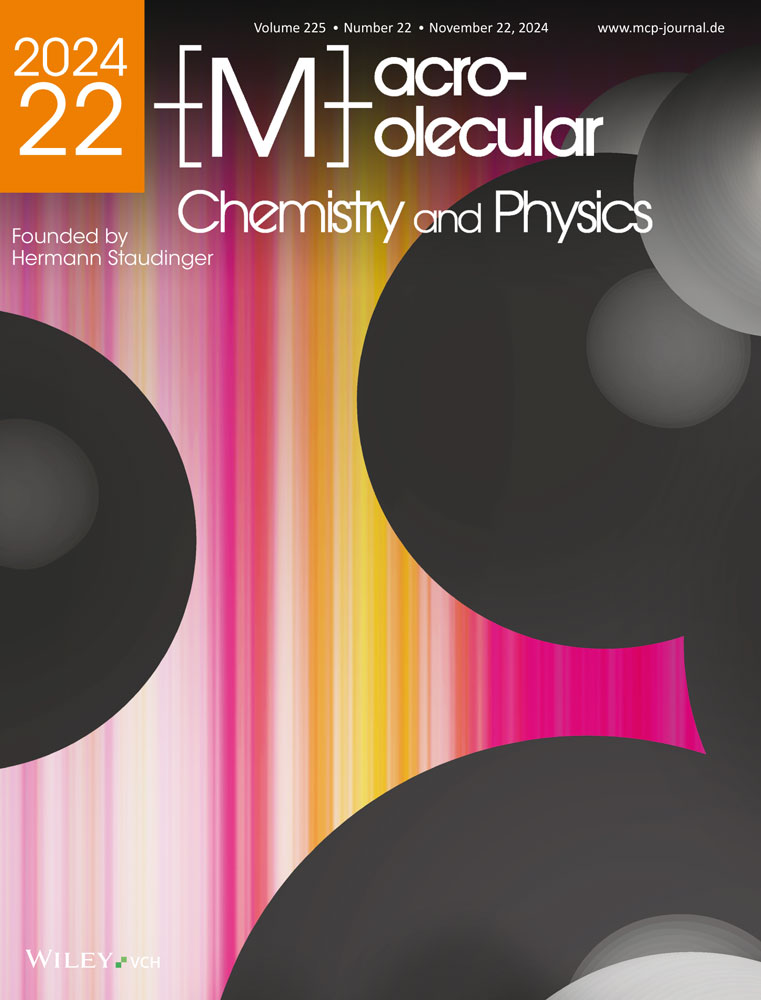可持续光辅助三维打印生物基微波功能化没食子酸
IF 2.5
4区 化学
Q3 POLYMER SCIENCE
引用次数: 0
摘要
三维打印技术的发展和对更具可持续性的三维打印材料的需求不断增长。然而,要取代目前的化石基聚合物,确保新材料的可持续性和性能至关重要。在本研究中,通过快速高效的微波辅助甲基丙烯酸化(5 分钟加热时间和 10 分钟 130 °C温度),以天然多酚化合物没食子酸(GA)为原料高产制得了一种生物基 UV 固化树脂。傅立叶变换红外光谱(FTIR)和质子核磁共振光谱证实了成功的微波辅助甲基丙烯酸化和高度取代。实时傅立叶变换红外光谱和差示扫描光量热分析进一步研究了甲基丙烯酸化没食子酸(MGA)的自由基紫外光聚合反应,清楚地表明了 MGA 的高光活性。此外,凝胶百分比评估表明,紫外线固化后形成了高度不溶性的馏分,凝胶含量高达 98%。光流变学和流变学证明了 MGA 适用于光辅助三维打印。事实上,通过数字光处理三维打印技术,可以在小范围内高精度地三维打印出蜂窝和空心立方体。最后,固化后的 MGA 具有很高的 Tg 值和热稳定性。本文章由计算机程序翻译,如有差异,请以英文原文为准。
Sustainable Light‐Assisted 3D Printing of Bio‐Based Microwave‐Functionalized Gallic Acid
The development of 3D printing technologies and the requirement for more sustainable 3D printing materials is constantly growing. However, ensuring both sustainability and performance of the new materials is crucial to replace current fossil‐based polymers. Here, a bio‐based UV‐curable resin is produced in high yield from gallic acid (GA), a natural polyphenolic compound, by means of rapid and efficient microwave‐assisted methacrylation (5 min heating time and 10 min at 130 °C). The successful microwave‐assisted methacrylation with a high degree of substitution is confirmed by Fourier transform infrared (FTIR) spectroscopy and proton nuclear magnetic resonance spectroscopy. The radical UV‐photopolymerization of the methacrylated gallic acid (MGA) is further investigated by real‐time FTIR and differential scanning photo calorimetry (photo‐DSC) analyses, clearly demonstrating the high photo‐reactivity of MGA. Moreover, the %gel assessment demonstrates the formation of highly insoluble fractions after the UV‐curing, with 98% gel content. The photo‐rheology and rheology support the suitability of MGA for light‐assisted 3D printing. Indeed, a honeycomb and a hollow cube are 3D printed by means of the digital light processing 3D printing technique with high accuracy in a small scale. Finally, the cured‐MGA illustrates high Tg and thermal stability.
求助全文
通过发布文献求助,成功后即可免费获取论文全文。
去求助
来源期刊

Macromolecular Chemistry and Physics
化学-高分子科学
CiteScore
4.30
自引率
4.00%
发文量
278
审稿时长
1.4 months
期刊介绍:
Macromolecular Chemistry and Physics publishes in all areas of polymer science - from chemistry, physical chemistry, and physics of polymers to polymers in materials science. Beside an attractive mixture of high-quality Full Papers, Trends, and Highlights, the journal offers a unique article type dedicated to young scientists – Talent.
 求助内容:
求助内容: 应助结果提醒方式:
应助结果提醒方式:


